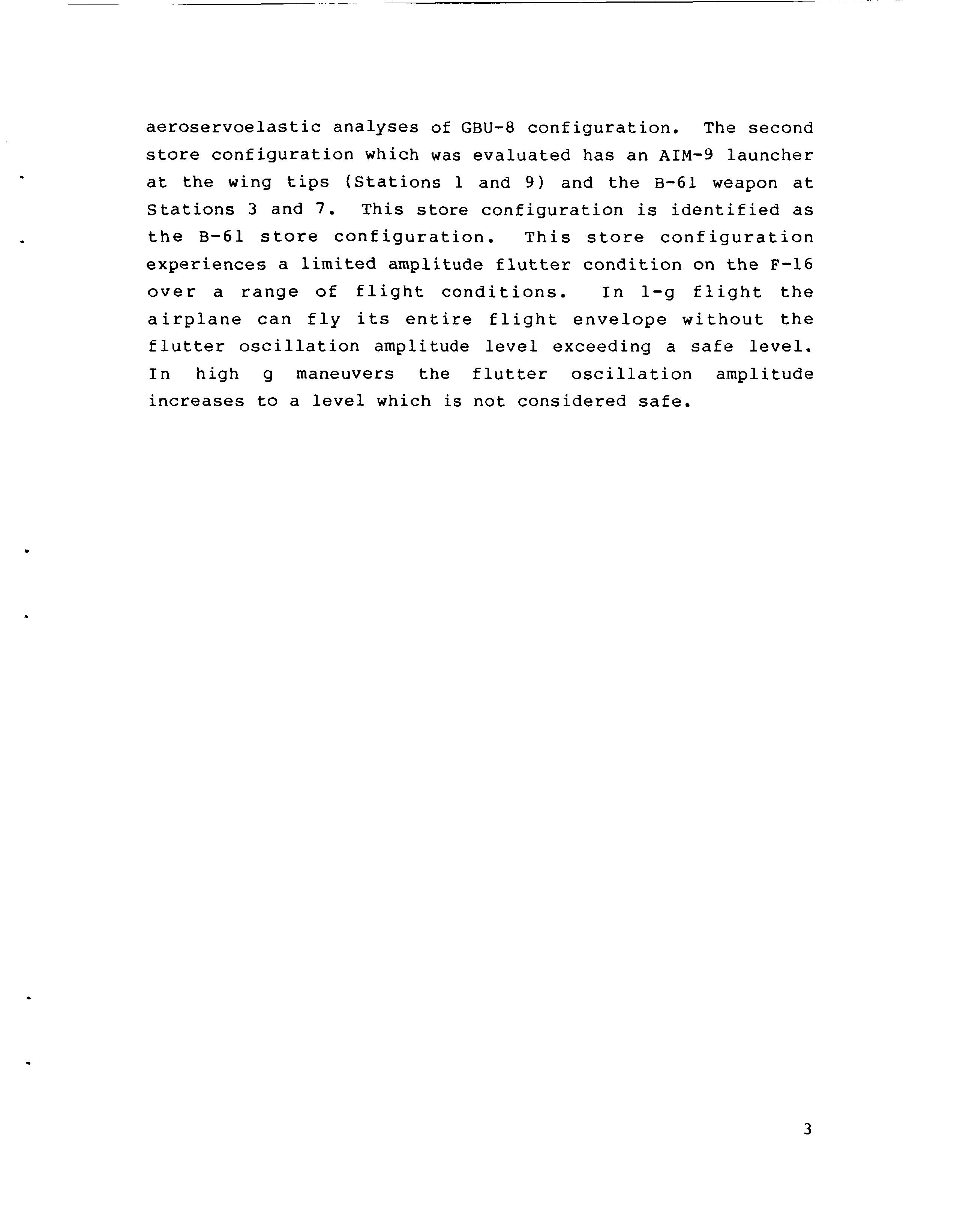
2 minute read
INTRODUCTION
from NASA Technical Reports Server (NTRS) 19870001427: Design and fabrication of the NASA decoupler pylon
INTRODUCTION
The NASA Langley Research Center has investigated the use of a decoupler pylon as a means of suppressing wing/store flutter (References 1 through 6). The concept consists of reducing the pylon pitch stiffness until the store/pylon pitch frequency is less than the fundamental wing bending frequency. These studies and wind tunnel tests have been expanded to include the fabrication of a ship set of pylons for the F-16. These pylons will be used to demonstrate the capabilities of the concept with a flight test program. The pylons are designed to replace the F-16 production weapon pylons which are carried at Stations 3 and 7 (Span Station 120). The details of the decoupler pylon design and the supporting analysis are described in Reference 7 to which this document is an addendum.
Advertisement
The pylons have a beam pitch spring which has a spring rate which was set to increase the airplane flutter speed by the maximum amount for one external store configuration. The external store configuration is identified as GBU-8 configuration and has an AIM-9 and launcher on the wing tips (Stations 1 and 91, the GBU-8 at Stations 3 and 7 (Span Station 1201, and 1/2 full 370 gallon tanks at Stations 4 and 6 (Span Station 71). The 370 gallon tanks are loaded with the center bay empty and the forward and aft bays full. The decoupler pylon is designed, from a strength standpoint, to carry all store loadings which are currently carried on Stations 3, 4, 6 and 7.
This addendum to the basic report summarizes the final analyses, which were based upon the results of the ground tests, and reports the results of analyses and tests which were conducted to evaluate the carriage of a second external store on the decoupler pylon. The additional analyses based upon the ground tests included flutter analyses and
2
aeroservoelastic analyses of GBU-8 configuration. The second store configuration which was evaluated has an AIM-9 launcher at the wing tips (Stations 1 and 9) and the 8-61 weapon at Stations 3 and 7. This store configuration is identified as the B-61 store configuration. This store configuration experiences a limited amplitude flutter condition on the F-16 over a range of flight conditions. In l-g flight the airplane can fly its entire flight envelope without the flutter oscillation amplitude level exceeding a safe level. In high g maneuvers the flutter oscillation amplitude increases to a level which is not considered safe.
3











